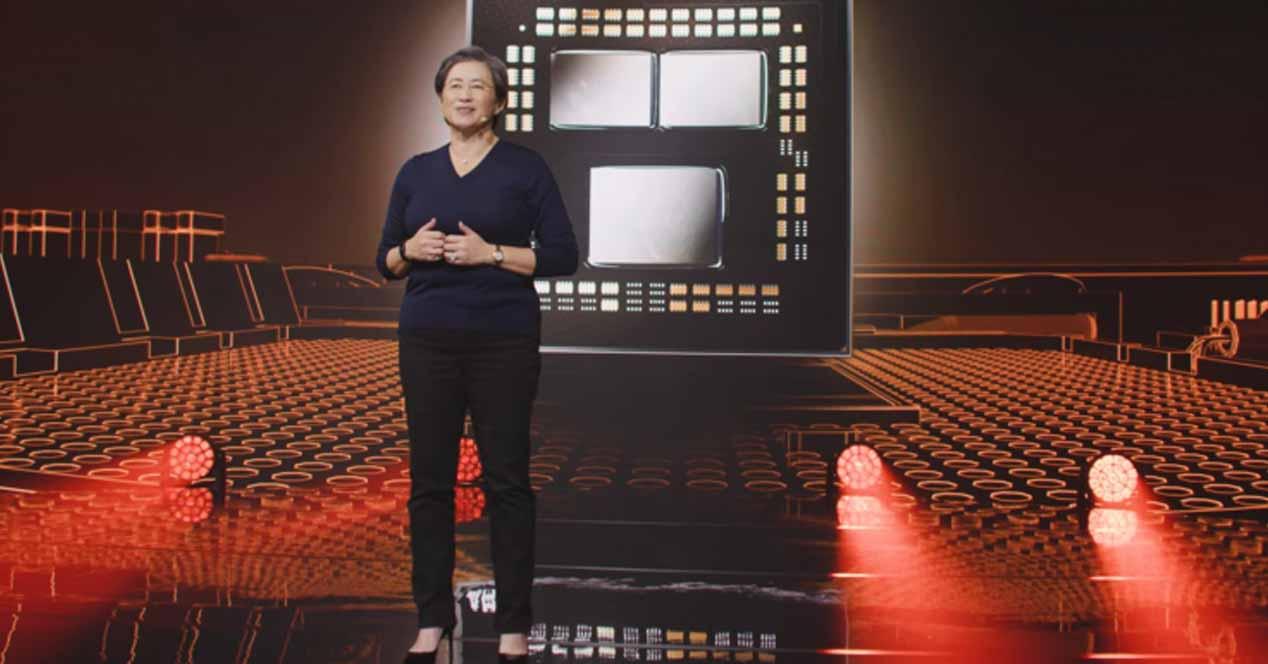We are therefore talking about processors AMD Ryzen 8000 “Granite Ridge” and “Strix Point”, and which haven’t been released yet or the Ryzen 7000, so there’s plenty of time to do that. Either way, Lisa Su seems to have plans for her next launches on track, in which they hope the chip shortage period is already over.
AMD relies on TSMC 3nm for its next generations
While Zen 4 aims to launch in 2022, the Zen 5 architecture is already slated for release around 2023-2024. It appears that the transition of Zen 4 from Zen 4 would be faster than the transition from Zen 3 to Zen 4, and it is that the report specifies that AMD should detail its vision of the future (probably in the form of news roadmaps) in this Computex 2021 who just fired the cannon.
The design of the AMD Zen 4 is expected to be finalized in the second half of this year and will be based on TSMC’s 5nm compute node. Meanwhile, TSMC is expected to begin mass production of its 3nm process node by the second half of 2022, with production increasing by 2023. The process node will be used to manufacture the Zen 5 chips. AMD’s next generation on their EPYC. and Ryzen processors including 5th gen CPU / APU EPYC “Turin”
Zen 4 and Zen 5 will see AMD become TSMC’s biggest HPC customers in 2023 and 2024, and here’s everything we know about these new processor families.
AMD Ryzen 8000 “Granite Ridge” for desktop processor
The AMD Ryzen “Granite Ridge” family will be part of the new Zen 5 architecture; will be compatible with the new socket AM5 in the new socket LGA1718, and for the moment almost nothing is known about this family of processors apart from their names and that their Zen 5 cores will offer an excellent advance in CPI, efficiency, clock speed and performance compared to Zen 4 cores (they will likely have a higher number of cores too).
Like the Raphael (Ryzen 7000), the Granite Ridge desktop processors will also include integrated GPUs which will be an upgraded version of the RDNA 2 or even RDNA 3 architecture. You will likely see an increase in I / O and maybe even the implementation of PCI-Express 5.0 to match Intel’s main platform. That said, Zen 5 is still a huge mystery, so it will be some time before we know something more concrete about the final specs and performance of these new chips.
AMD Ryzen 8000 “Strix Point”, APU Zen 5 to 3 nm
AMD Strix Point Ryzen APUs will offer a hybrid architecture achieved by combining two Zen main IPs; the main cores would be based on the Zen 5 architecture and the rest would be Zen 4 (note that these APUs are not expected until 2024 but Zen 4 will be released sometime in 2022).
It is claimed that the Zen 5 and Zen 4 cores for Strix Point APUs will be based on TSMC’s 3nm process node just like the previous ones, and the most interesting thing is that we already know that Zen 4 will be manufactured on node 5. nm, so we could look for an improved version of the architecture of these APUs. The small Zen 4 cores would be called Zen 4D, and these APUs would have 8 Zen 5 cores and 4 Zen 4 cores in total.
A new L4 cache system will also be implemented in these Ryzen 8000 APUs which will function as a system level cache. Rumor has it that the hybrid approach may only be a mobile-specific version, while the desktop chips will be based on the same monolithic design we’ve had so far, so it’ll be really interesting to see if AMD uses it. its X3D packaging technology for APU Strix Point, as this seems to be the next logical path in MCM APU development.
Until now, AMD APUs offered a monolithic design in all their IPs (CPU, GPU, IO) integrated in the same die; Technologies such as Infinity Cache and RDNA 3 are also expected to debut on these AMD Ryzen 8000 “Strix Point” APUs. Again, this is all hearsay, but we can certainly expect many exciting developments in the APU segment in the years to come.
AMD EPYC “Turin” for HPC and servers
The 5th generation EPYC processor family, codenamed Turin, will replace the Genoa range but will be compatible with the SP5 platform. The Turin chips could use case designs like we’ve never seen before, as we know Milan-X is already real and will supposedly feature Zen 3 cores stacked to increase the number of cores. However, Turin will come years later and as such we can expect more futuristic packaging designs.
AMD Genoa processors are said to feature up to 96 PCIe 5.0 interface cores. With Turin, it is very likely that we will see a PCIe 6.0 interface and up to 128 cores on a single chip or even more if AMD opts for stacked X3D chiplets. Of course, we can’t forget AMD’s HEDT Ryzen Threadripper line of chips, which will obviously have a big launch with the Zen 5 cores, although it is true that this line has always stuck to the Zen product cycle, so we don’t expect this launch to happen until 2024 or even 2025.
Table of Contents












